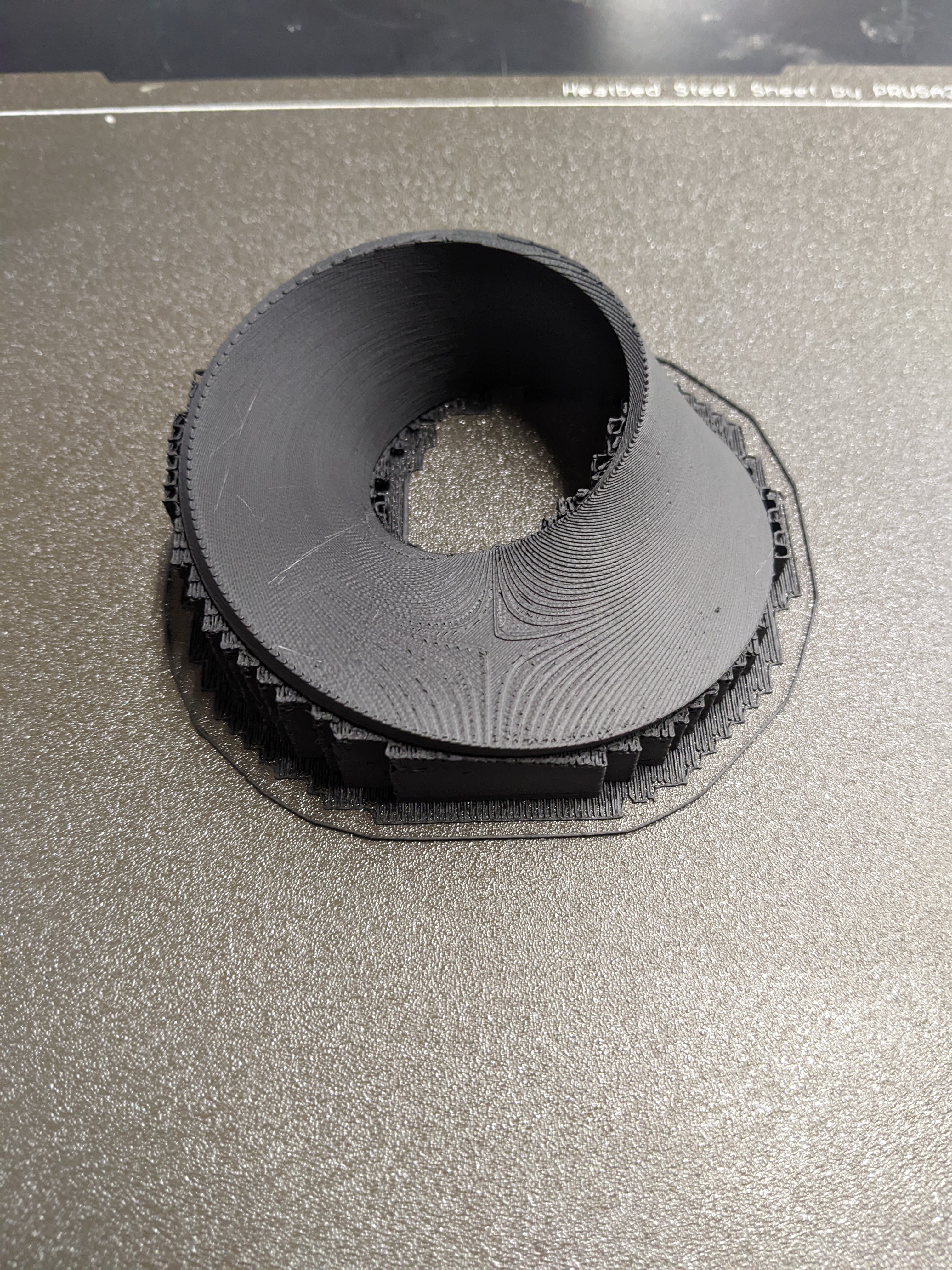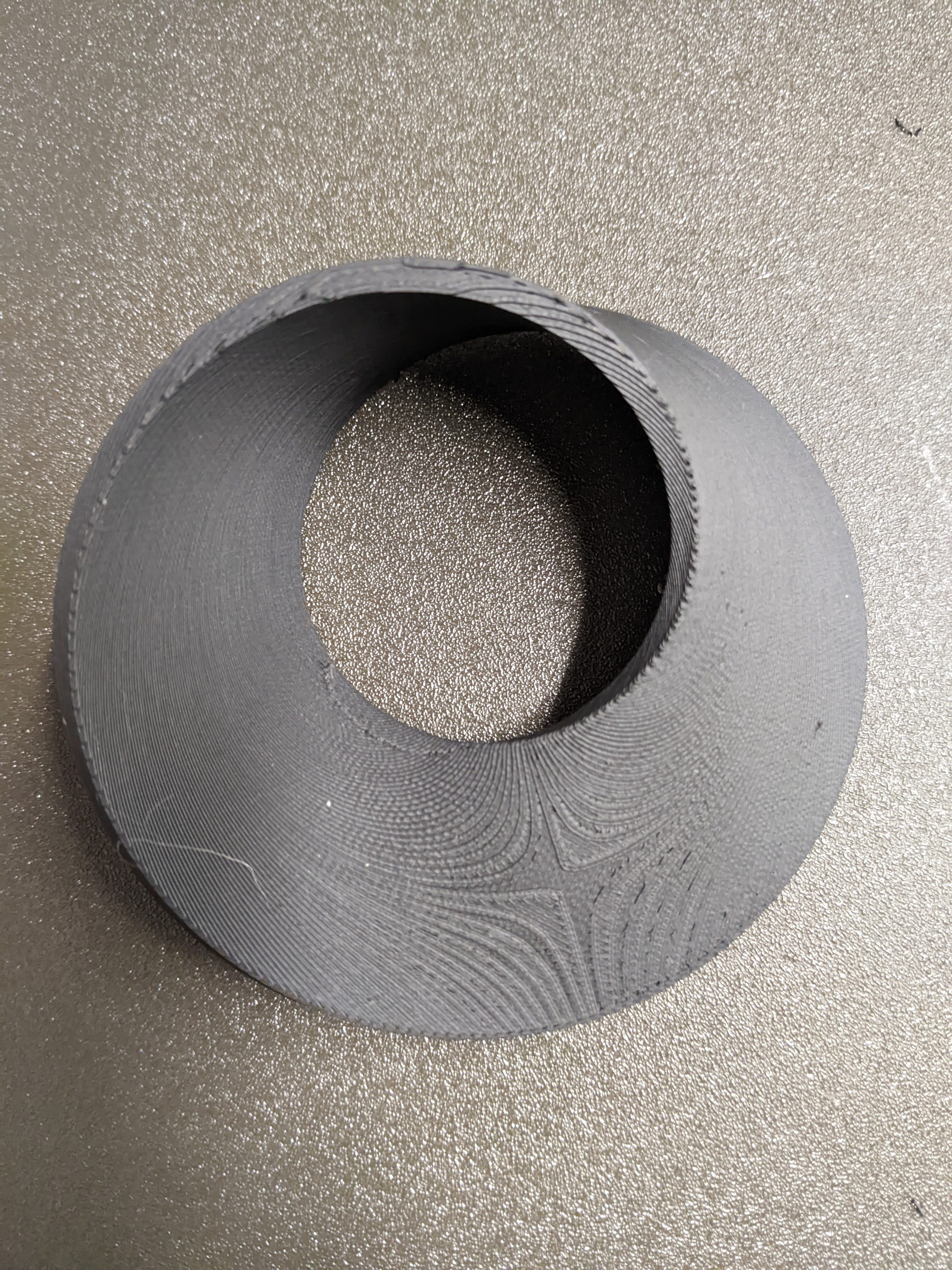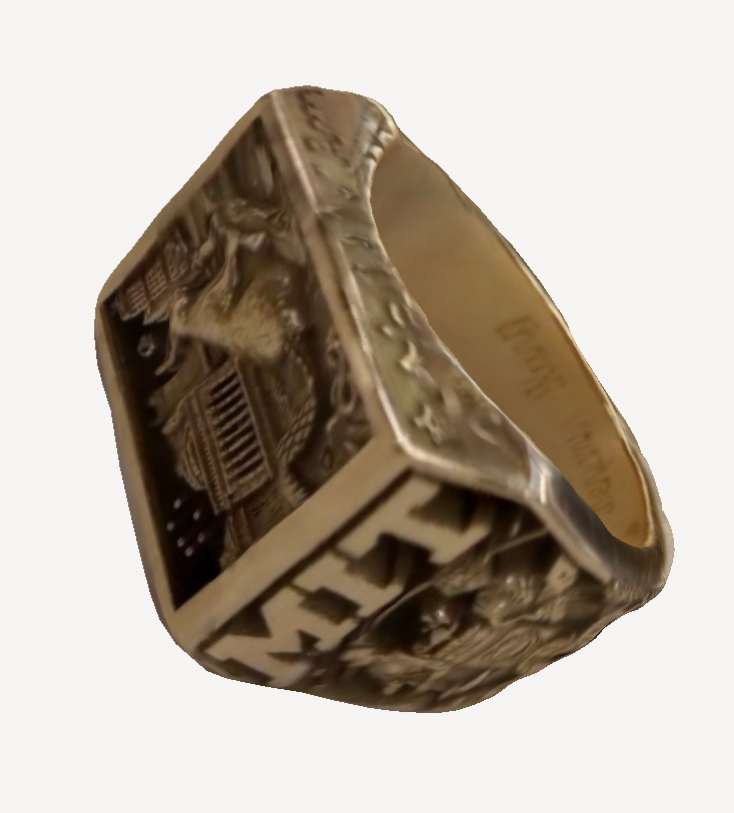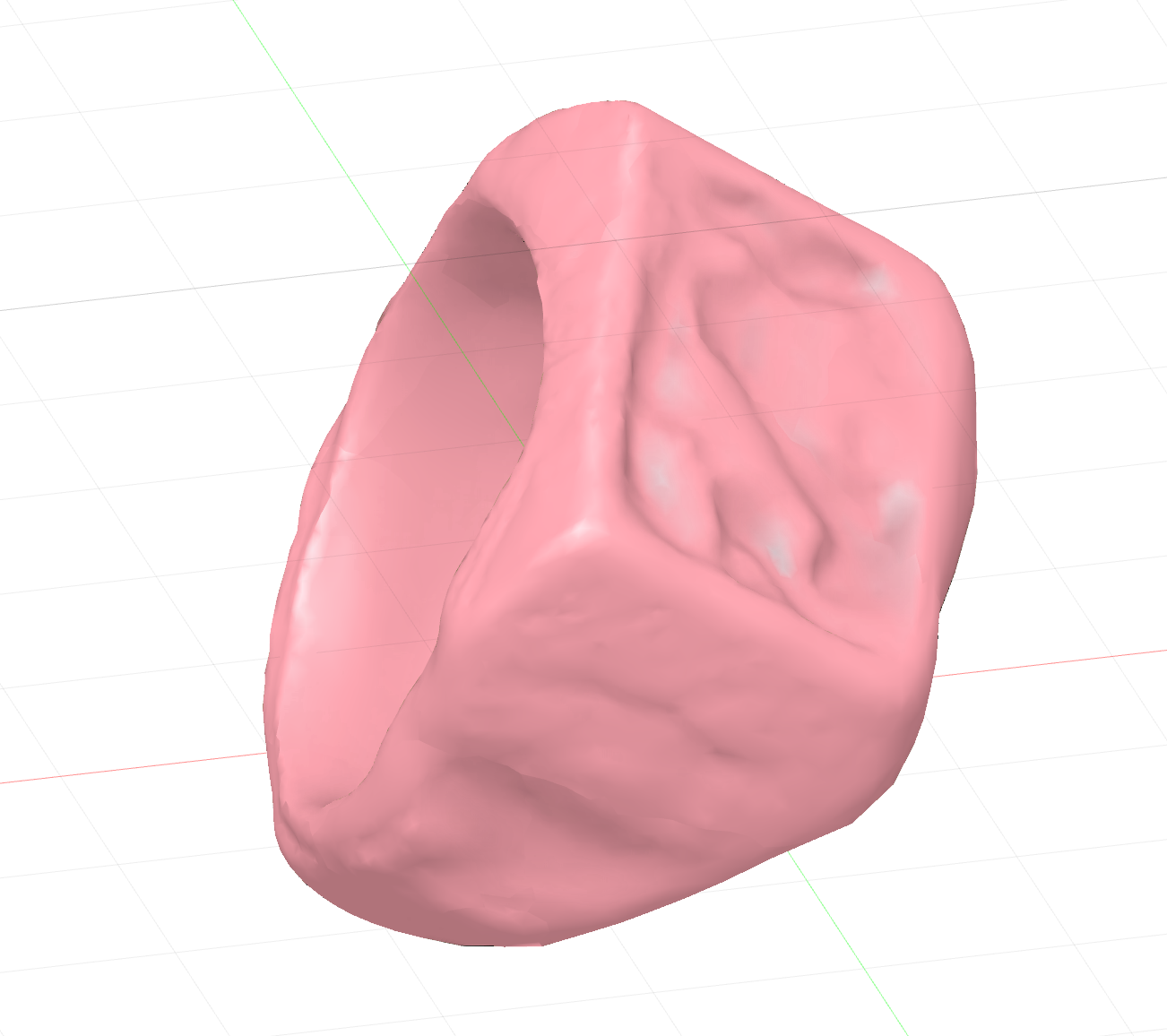-
This week, we learned how to 3D print using the MK3S+ model printer and Prusa Slicer software, as well as how to scan objects using the Revopoint scanner. Besides the assignments below, see this page for updates on the final project.
3D Print
The first assignment was to design and print a small object that could not be easily made by subtractive methods. Inspired by my geometry class, I decided to print a möbius strip, which is a surface with one side and one edge! It can be formed by attaching the ends of a strip of paper together with a half-twist. I followed this tutorial to create the design in Fusion 360. I then exported the design to Prusa Slicer. Before printing, I had to add supports everywhere because the mobius strip is so curved and there was very little surface area in contact with the print bed. The final design took 2 hrs 55 min to print. After printing, I used a paint scraper to gently remove the supporting filament.
Printing in Progress 
Mobius Strip on Print Bed 
Final Mobius Strip with Supports Removed Scan
The second assignment was to scan something. The object I tried to scan was my friend's brass rat, which is a ring with many intricate designs that each MIT student gets in their sophomore year. I attempted to use the Revopoint and many photogrammetry applications on my phone, including Polycam and KIRI Engine. However, after several hours, I still couldn't get a great result with any of these, maybe because the gold ring was reflective, and the designs were extremely small and detailed. I tried adjusting the distance between the camera and the object, removing extraneous objects from the background, using the photo booth and flashlights to provide a bright light source, capturing different camera angles, changing various settings on the RevoScan application, etc.
For example, the Polycam scan captured the general shape of the ring, and in the app, it seemed to have done an okay job of capturing the designs. However, by the time the file was imported into Fusion 360, the sharp indentations and protrusions were reduced to vague dips and lumps. I think there are 2 possible explanations: either the scanner did not actually capture the depth well and it only seemed like it did in the app because of the colors, or the scanner did capture the depth well but it got erased somehow in the exporting/importing process (the free version of Polycam only allows exports as .glb, so I used a slightly sketchy online website to convert it to .obj for Fusion 360 and .stl for Prusa Slicer).

Brass Rat 
Scan of Brass Rat in Polycam App 
Polycam Scan of Brass Rat in Fusion 360 I wonder if the level of detail on the brass rat simply exceeds the abilities of 3D scanning and photogrammetry applications, or if it is possible with some more advanced techniques... In the future, I hope to try scanning other objects to see if I can find better success!